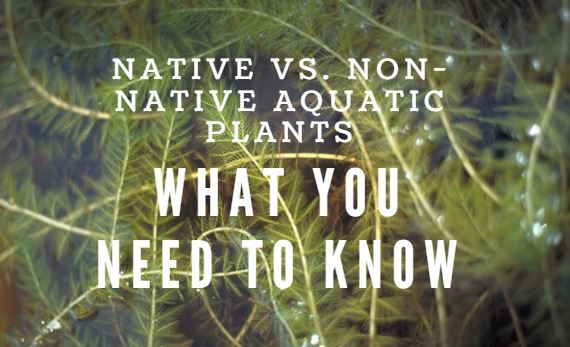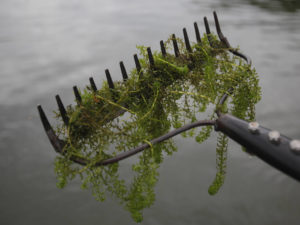
The rooted aquatic plants that thrive in many lakes and ponds are divided into three main groups: submerged, floating-leaved and emergent. Here’s what you need to know about the lake you are considering:
- Native aquatic plants are important in the ecological balance of lakes because they provide oxygen, food, habitat, shelter and contribute to the diversity of the aquatic environment. In addition, their roots help to stabilize the shore and slow the flow of sediments and pollutants.
- Non-Native aquatic plants are an Invasive Species. Many plants that are found in lakes were originally brought here from other places around the world and these
 plants are called non-native or exotic. They can be extremely destructive to the environment by out-competing native species and taking over the water body (invasive). They have no natural predators. Invasive species can impede recreational activities, lower property values, decrease aesthetic values, stunt fish growth and displace wildlife. They spread by “fragmentation” …meaning fragments of the weeds that get chopped up by boats or other means, sink to the bottom and take root. They can spread incredible fast.
plants are called non-native or exotic. They can be extremely destructive to the environment by out-competing native species and taking over the water body (invasive). They have no natural predators. Invasive species can impede recreational activities, lower property values, decrease aesthetic values, stunt fish growth and displace wildlife. They spread by “fragmentation” …meaning fragments of the weeds that get chopped up by boats or other means, sink to the bottom and take root. They can spread incredible fast. - Most lakes, if there is an infestation of invasive plants, will already have an active lake association or management plan in place to try to control the species. Find out what is being done and what you can do for prevention on your new lakefront property.
- There are also options for individual homeowners who may want to control the weeds in their own swimming area. For example: Throw Rakes, Benthic Barriers, Mechanical Cutting, Aeration and Hydro-Raking. Review a site called WeedersDigest.com for ideas.
- Permits and/or permission may be required to clear any plant material from your property…and may differ from town to town.
- Keep in mind, there is almost always something you are “giving up” while gaining a clear waterfront…fish and wildlife habitat may be displaced once weeds are removed.
Key Point: Lake management is lake specific. What works on one lake may not work on another.
Posted by Scott Freerksen “The Lake Guy”
